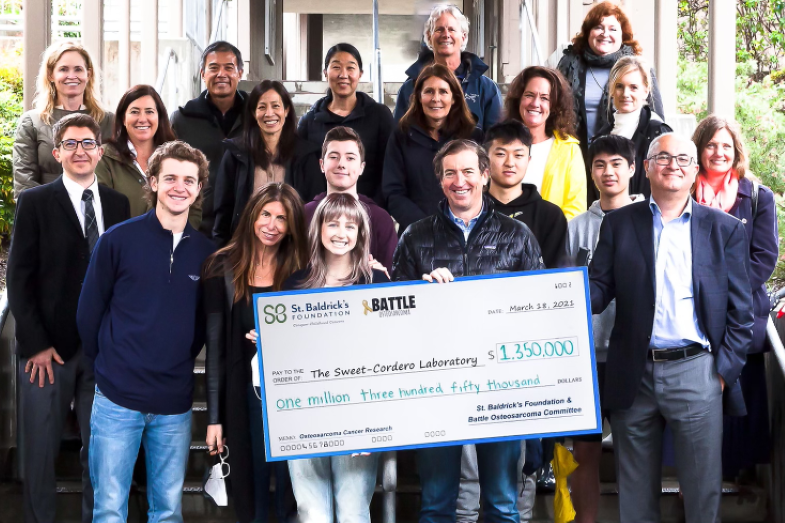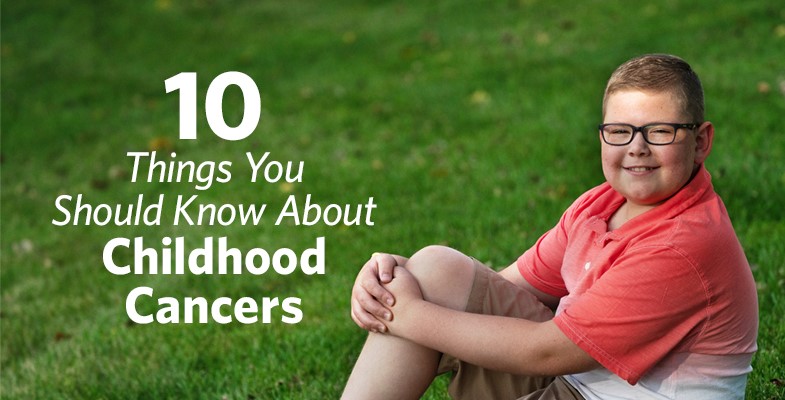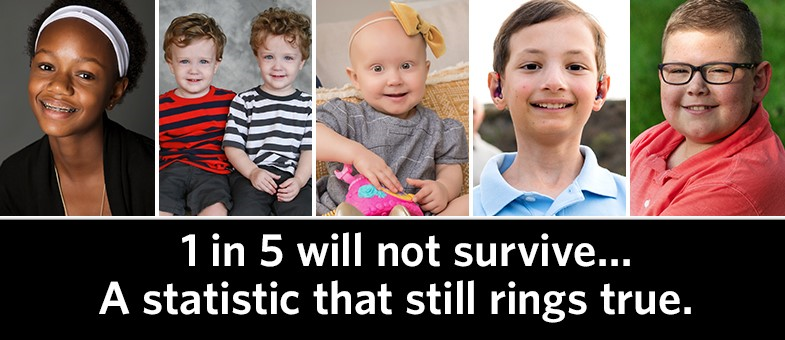Battle Osteosarcoma Funds $1.35 Million in Research: Honoring Charlotte, Dylan and Tyler
Two years ago, a group of three dedicated moms rallied some dear friends to achieve what seemed like an ambitious goal to support osteosarcoma research. As you’ll see below, they knocked that one out of the park!
 Battle Osteosarcoma volunteers set out to raise $150,000, then raised more than $1.3 million!
Battle Osteosarcoma volunteers set out to raise $150,000, then raised more than $1.3 million!
Sun Protection 101: How to Keep Your Children Healthy

Especially striking increases have been noted for malignant melanoma, the most dangerous form of skin cancer.
In fact, the CDC reports that skin cancer is now the most common form of cancer in the U.S.
As the weather gets warmer and the sun gets hotter, it is important to learn how to best protect our children from solar radiation.
What You Should Know About Research into Rare Pediatric Cancers
Rare Cancer Day is September 30th, but the St. Baldrick’s Foundation fights rare cancers year-round.

What is rare disease?
When it comes to cancer, or even diseases as a whole, “rare” is a misleading word.
A rare disease is defined as “any disease or condition that affects fewer than 200,000 people in the United States, or about 1 in 1,500 people.” About 72% of rare diseases are genetic, and of those, 70% start in childhood.
Worldwide, people with rare diseases make up less than 6% of the population. But more than 6,000 rare diseases have been identified so far, and they affect more than 300 million around the world. If these people were a country, they would be the world’s third largest nation.
10 Facts About Childhood Cancer
Childhood Cancer Awareness Month is the perfect time to test your knowledge — and to spread the word about why you support lifesaving research through St. Baldrick’s. And you may learn something new!

Give Kids a Lifetime
This year during Childhood Cancer Awareness Month, while we celebrate progress, let’s spread the word that surviving five years is not enough. We need to give kids a lifetime.
 Every year we select five children – with one who has passed away from cancer representing the 1 in 5 who don’t survive. For 2020, we have six kids, in order to include twin brothers Seth and Joel, who died months apart from each other.
Every year we select five children – with one who has passed away from cancer representing the 1 in 5 who don’t survive. For 2020, we have six kids, in order to include twin brothers Seth and Joel, who died months apart from each other.
More than anything, Childhood Cancer Awareness Month is a time to honor the thousands of children fighting cancer as well as survivors, and to remember those we have lost. It’s a time for families to tell their stories. And it’s a time for others to listen and learn, show we care, and find ways to help.
What Is Retinoblastoma?
Dr. Chintagumpala’s specific interests include the management of children with all brain tumors, retinoblastoma, bone tumors and kidney tumors. He serves as chair of the Retinoblastoma Sub-Committee for the Children’s Oncology Group and is a leader in conducting clinical trials involving children with brain tumors and Retinoblastoma.
Dr. Rodríguez-Galindo is a member of the St. Baldrick’s Scientific Advisory Committee. His research focuses on retinoblastoma, bone sarcomas, histiocytic disorders and rare childhood cancers.

What is Retinoblastoma?
Retinoblastoma is a cancer of the eye that only occurs in children and typically in very young children. Two-thirds of retinoblastoma patients are diagnosed before they’re 2 years old and more than 90% are diagnosed before turning 5.
What Is Medulloblastoma?
Dr. Sayour and Dr. Petrosiute are both St. Baldrick’s Scholars. This blog was written by Dr. Petrosiute in May 2014 and updated in April 2020 by Dr. Sayour.
What is medulloblastoma?
Medulloblastoma is the most common malignant brain tumor in children. It originates in the back part of the brain called the cerebellum. In up to 1/3 of cases, it can spread to other parts of the brain and spinal cord. Most cases are diagnosed before age 10.
What Is Wilms Tumor?

What is Wilms tumor?
Wilms tumor is a cancer of the kidney. It is one of the most common types of childhood cancer, with approximately 500 new patients a year in the United States alone. It was named after German surgeon Max Wilms, who is credited with discovering the cancer in 1899. There are several other less common types of kidney cancer that affect children and teenagers. These include clear cell sarcoma, malignant rhabdoid tumor, and renal cell carcinoma.
What Is Neuroblastoma?

Susan L. Cohn, M.D., chair of the St. Baldrick’s Scientific Advisory Committee and world renowned neuroblastoma expert, explains what neuroblastoma is and how St. Baldrick’s research is contributing to better outcomes for patients.
« Newer PostsOlder Posts »



 SBF
Tweets »
SBF
Tweets »